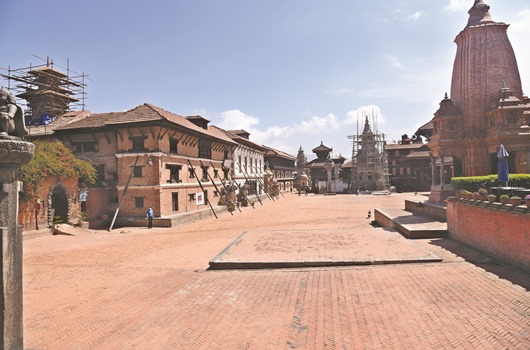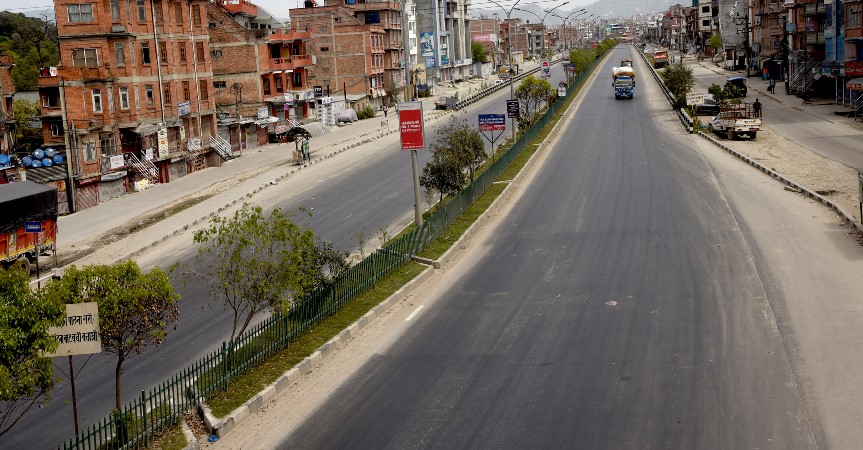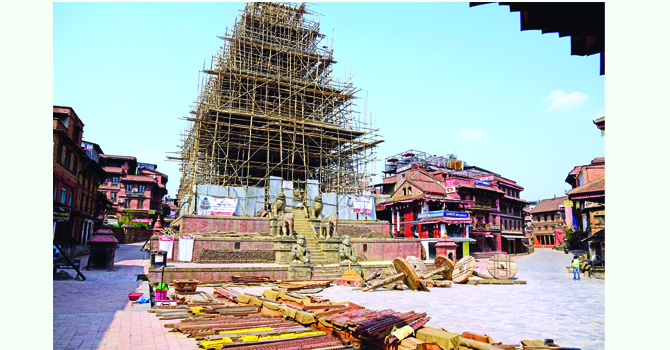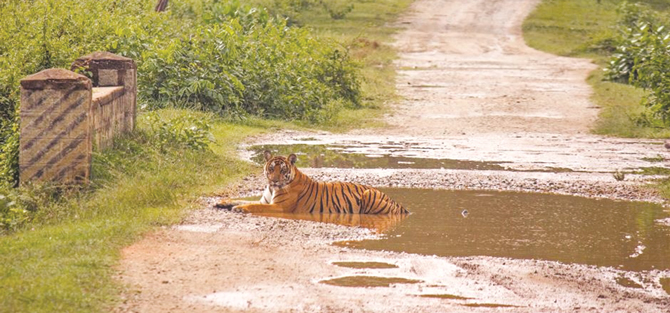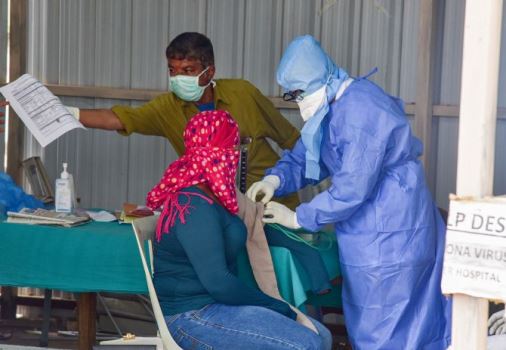Glacial retreat in Everest region 10-60 metres per year: Study

By Indira Aryal
Kathmandu, Dec. 18: Nepal is among the countries which are most vulnerable to climate change, the impacts of which have been observed in several sectors such as water, agriculture, and biodiversity, and the cryosphere.
Glacier retreats, temperature increases, erratic rainfall and an increase in the frequency and intensity of extreme climatic events are some impacts of climate change in the country. Several studies have reported an increase in temperatures in Nepal over the past few decades.
According to a report published by the International Centre for Integrated Mountains (ICIMOD) and United National Development Fund (UNDP), glacier retreat, for instance, was found to be 10 to 60 metres per year in the Everest region and temperature is one of the important climatic variables responsible for glacier melt.
Dr. Rijan Bhakta Kayastha, head of Environmental Science and Engineering at the Kathmandu University, said that glaciers are retreating and glacial lakes are forming and expanding due to the climate change impact.
He said that the average altitude of the equilibrium line (ELA) of glaciers is shifting upward and there is a risk of glacial lake outburst flood (GOLF) event in various parts of the country.
From 1977 to 2010, almost 24 per cent of glacier area decreased and 29 per cent of ice reserve decreased in Nepal. There were 1466 glacier lakes in Nepal in 2010 and that increased to 2070 in 2015 due to temperature rise in the Himalayans, he added.
The Department of Hydrology and Meteorology (DHM) conducted a comprehensive study of climate change between 1971 and 2014 in Nepal and the study provided the insightful results that the trend in annual maximum temperature in Nepal was significantly positive, at 0.056°C per year from 1971 to 2014. The report also revealed a warming rate of 0.086°C per year in the Higher Himalayas over that period.
The ICIMOD and UNDP study was conducted within the river basins of the Koshi, Gandaki, and Karnali and a total of 3,624 glacial lakes were mapped in the Koshi, Gandaki, and Karnali basins of Nepal, the TAR of China, and India.
Out of 3,624 lakes, 1,410 lakes are equal to or larger than 0.02 sq km. It is considered large enough to cause damages downstream where the lake breaks.
Out of the 1,410 lakes, 47 glacial lakes were identified as potentially dangerous lakes (PDGL). These include 42 lakes in the Koshi, three in the Gandaki, and two in the Karnali basins. Of these, 21 PDGLs are situated in Nepal, including Imja, Tso Rolpa, Lower Barun and Hongu. Bursting any one of these would send a wall of water and debris downstream to Koshi, the report said.
UNDP and ICIMOD have presented a suggestion to lower the water level of those four lakes to minimize the outburst. “There are more than four dangerous lakes in Nepal, but ICIMOD and UNDP have proposed through the Green Climate Fund to lower down the water level from four lakes,” Kayastha said.
According to the study, 141,000 people in the Tso Rolpa area, 165,068 people in Thulagi area of Gandaki and 96,767 people in the Imja of Khumbu area will be affected if the ice lakes erupt.
Floods following the glacier eruption have caused severe damage to settlements and infrastructure. At the same time, there is damage to biodiversity. The study also found that the area of glaciers in all three
countries has increased from 94.4 sq km to 127.6 sq km.
The number of lakes has increased by 86 per cent and the area by 35.1 per cent. There were 2,119 glacial lakes in the Koshi reservoir in 2000, of which 2,087 were formed five years later and 2,064 in 2015. The Gandaki Reservoir had 377 glaciers in 2000, 405 in 2005 and 432 in 2015.
The Karnali Reservoir had 1,105 glaciers in 2000. So far, 26 incidents of ice lake eruptions have been recorded, 14 of them were from Nepal. Of those identified as high-risk eruptions, water levels in four glacial lakes have so far been reduced in Nepal, India and China.
Various studies have reported significant warming in the Higher Himalayas, reflecting the sensitivity of mountain glaciers to climate change. The major signs of climate change are increased glacier ice melt, and the formation and expansion of glacial lakes with the occurrence of GLOF events, the report said.
The Nepal Climate Vulnerability Study Team also projected an increase in annual mean temperature, by 1.4°C, 2.8°C, and 4.7 °C by 2030, 2060, and 2090 respectively.
Recent News

Do not make expressions casting dout on election: EC
14 Apr, 2022
CM Bhatta says may New Year 2079 BS inspire positive thinking
14 Apr, 2022
Three new cases, 44 recoveries in 24 hours
14 Apr, 2022
689 climbers of 84 teams so far acquire permits for climbing various peaks this spring season
14 Apr, 2022
How the rising cost of living crisis is impacting Nepal
14 Apr, 2022
US military confirms an interstellar meteor collided with Earth
14 Apr, 2022
Valneva Covid vaccine approved for use in UK
14 Apr, 2022
Chair Prachanda highlights need of unity among Maoist, Communist forces
14 Apr, 2022
Ranbir Kapoor and Alia Bhatt: Bollywood toasts star couple on wedding
14 Apr, 2022
President Bhandari confers decorations (Photo Feature)
14 Apr, 2022




